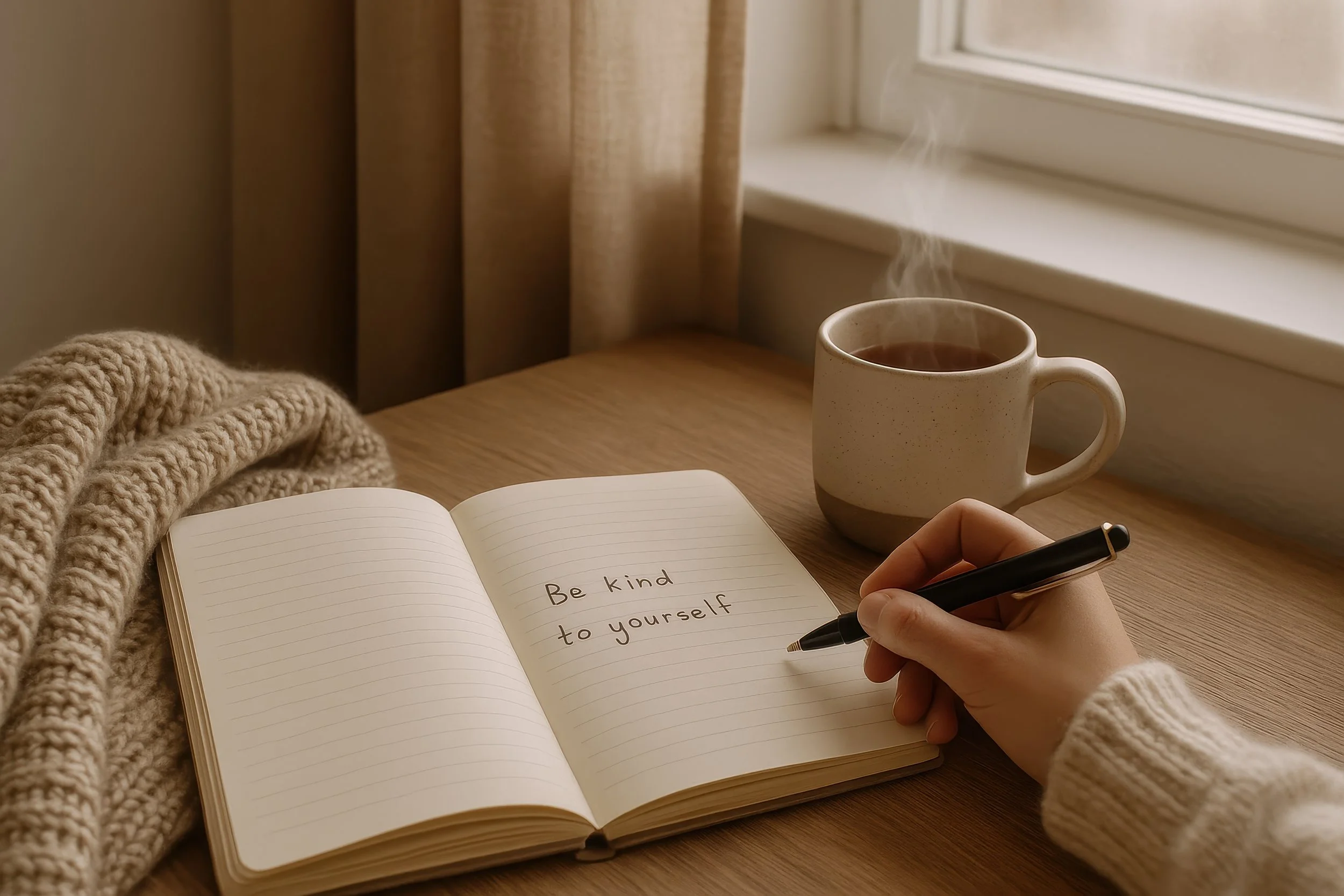Emotion Regulation: How to Feel Without Falling Apart
We’ve all had those moments where our emotions feel too big. One small comment, one unexpected text, and suddenly your chest tightens, your thoughts race, and you’re fighting the urge to either shut down or spiral. You’re emotions might feel really intense and overwhelming, and you don’t know how to regulate.
Emotion regulation isn’t about not feeling—it’s about learning to ride the wave without letting it drown you. It’s about allowing yourself to feel your emotions so you can move past them. You have to feel to heal.
When you stop trying to control your emotions and start allowing them, they lose their power over you.
Why It’s So Hard
Most of us were never actually taught how to regulate emotions. Maybe you grew up being told to “calm down,” “stop crying,” or “get over it.” You learned that feelings were inconvenient, messy, or even wrong. So as adults, we either suppress them or let them take the wheel. Neither extreme feels good—and both can leave you feeling disconnected from yourself. When we suppress our emotions, they come out in an explosion at all the wrong times. The more we suppress our feelings, the more explosive they are later on.
What Emotion Regulation Really Means
Emotion regulation means being able to notice your feelings, understand them, and respond intentionally instead of reactively. It’s the space between feeling angry and sending the text, between feeling anxious and canceling your plans. Just because you feel an emotion, it doesn’t mean you have to act on it.
It’s not about controlling emotions—it’s about staying connected to yourself in the middle of them. It’s not about getting rid of the emotion- it’s about reducing the intensity.
Regulation doesn’t mean shutting your feelings down—it means learning to pause long enough to choose how you want to respond. The goal isn’t to erase emotions, but to understand them.
How to Start Regulating (Without Numbing)
Name What You Feel.
It sounds simple, but putting words to emotions lowers their intensity. Try: “I feel anxious because I care about this,” or “I feel angry because my boundaries were crossed.” You have to name an emotion to tame it.Check the Facts.
Emotions are valid, but not always accurate reflections of what’s happening. Ask yourself: Is this feeling based on the present moment, or is it touching an old wound? Is this thought a fact or fiction? If it is a fact, what evidence do I have to support it?Soothe Your Nervous System.
Deep breathing, grounding, a cold splash of water, or even stepping outside for two minutes can help your body calm enough for your mind to catch up. Regulation starts in the body, not the mind. By doing kind things for yourself, you can show yourself compassion when difficult emotions come up.Validate Instead of Judge.
Instead of “I shouldn’t feel this way,” try “It makes sense I feel this way.” Self-validation softens reactivity and builds emotional resilience. Validating yourself can help you understand yourself.Choose Your Next Step.
Once you’ve calmed your system and acknowledged the feeling, ask: What would help me right now? Maybe it’s journaling, calling a friend, or simply pausing before responding. Try to identify three other options you have besides reacting. Having options will give you a sense of control.
Regulation is about slowing down enough to create choice. When you realize you have options, you take your power back from the emotion—and that’s where true control begins.
Regulation Isn’t Perfection
Even the most grounded people lose it sometimes. Regulation isn’t about staying calm 24/7—it’s about returning to center more quickly and with more compassion. Over time, you build trust in yourself: the kind that says, “Even if I get overwhelmed, I can handle it.” You’ll learn to build compassion for yourself, and allow yourself to sit with your emotions without doing anything to make them worse.
When You Stop Fighting Your Feelings
Emotion regulation is self-leadership. It’s knowing that you can feel sadness, anger, disappointment, or fear—and still be okay. When you stop fighting your emotions, you stop fighting yourself. And that’s where real healing begins. When you allow yourself to feel an emotion, you can move past it.
Learning to regulate your emotions isn’t about being calm all the time—it’s about trusting yourself to feel deeply, respond intentionally, and know that no emotion is too much to handle.




